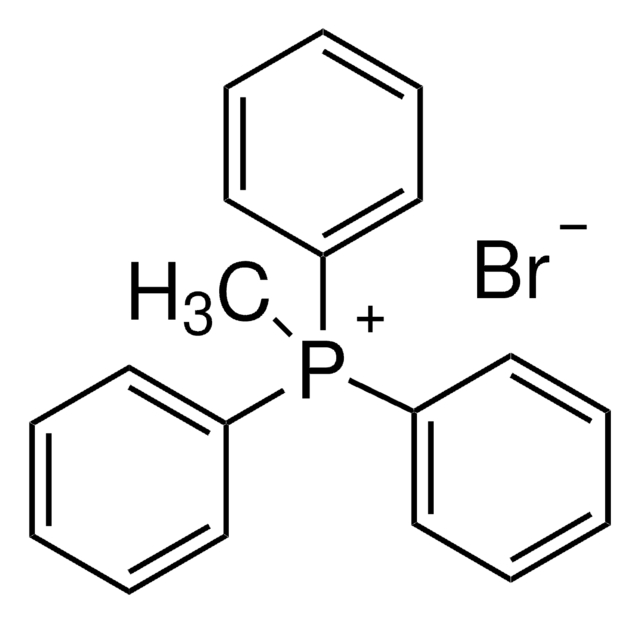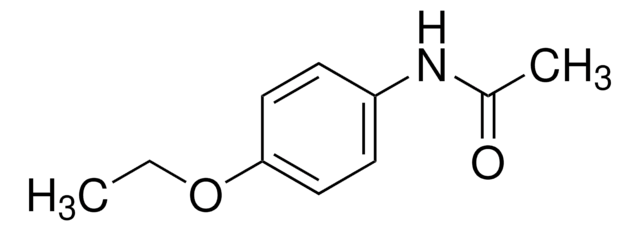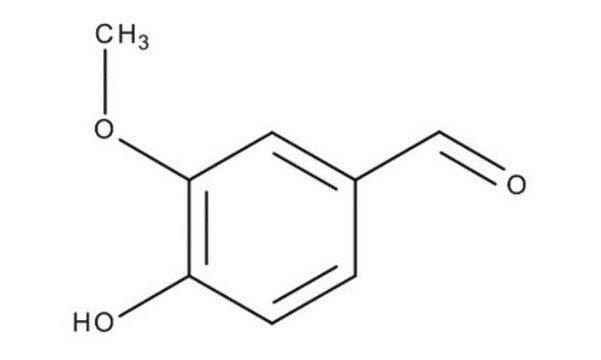77634
Mettler-Toledo Calibration substance ME 51143093, Vanillin
traceable to primary standards (LGC)
Synonym(s):
Vanillin, 4-Hydroxy-3-methoxybenzaldehyde, Vanillic aldehyde
About This Item
Recommended Products
grade
analytical standard
Quality Level
vapor density
5.3 (vs air)
vapor pressure
>0.01 mmHg ( 25 °C)
quality
traceable to primary standards (LGC)
shelf life
limited shelf life, expiry date on the label
bp
170 °C/15 mmHg (lit.)
mp
81-83 °C (lit.)
application(s)
food and beverages
pharmaceutical
format
neat
SMILES string
COc1cc(C=O)ccc1O
InChI
1S/C8H8O3/c1-11-8-4-6(5-9)2-3-7(8)10/h2-5,10H,1H3
InChI key
MWOOGOJBHIARFG-UHFFFAOYSA-N
Looking for similar products? Visit Product Comparison Guide
General description
Mettler-Toledo calibration substance ME 51143093, vanillin is an analytical standard for use in the regular checking of Mettler-Toledo melting point instrument. Its value equals an average of 6 to 12 measurements with a Mettler-Toledo MP90 Excellence instrument that is calibrated against primary standards. The melting point is validated by Capillary method according to European Pharmacopeia (2.2.14.)
Application
Features and Benefits
- Traceable to a primary standard (LGC, London)
- Melting point evaluation conducted in both thermodynamic and pharmacopeia modes for physically correct and heating rate dependent melting point determinations, respectively
- Provided with certificates of analysis and safety data sheet
- A product of analytical standard grade to help meet the QC/QA requirements of melting point determination
- Standard deviation up to ± 0.2 °C
Recommended products
Legal Information
Signal Word
Warning
Hazard Statements
Precautionary Statements
Hazard Classifications
Eye Irrit. 2
Storage Class Code
11 - Combustible Solids
WGK
WGK 1
Flash Point(F)
319.6 - 321.4 °F - closed cup
Flash Point(C)
159.8 - 160.8 °C - closed cup
Personal Protective Equipment
Choose from one of the most recent versions:
Already Own This Product?
Find documentation for the products that you have recently purchased in the Document Library.
Customers Also Viewed
Our team of scientists has experience in all areas of research including Life Science, Material Science, Chemical Synthesis, Chromatography, Analytical and many others.
Contact Technical Service









